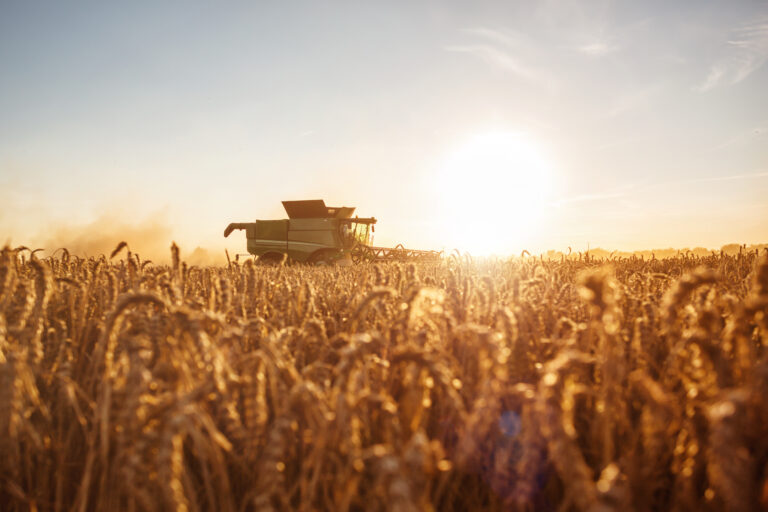At the annual conference held from June 14th, Agricultural Benchmarks Cash Crop Network discussed recent trends in global crop production.
The conference took place in Valladolid and was organised by the Spanish Ministry of Agriculture, which, together with the operator Tragusa, has created and manages an excellent network of 37 representative crop farms. Around 55 international experts from around the world came together to discuss the latest developments and current issues in global crop production.
On the economic front, 2023 is the year for most typical Agricultural Benchmarks Farm revenues fell substantially in 2010 compared to previous years which were certainly very profitable. Despite the downward trend in world markets, many farms experienced significant declines in land revenues due to high on-farm fertilizer prices, rising machinery costs and falling produce prices.
The prediction for 2024 is: Agricultural Benchmarks Leaders of the Agricultural Network, coordinated by Germany’s Thünen Institute, are even more pessimistic: Any relief that would come from lower fertilizer prices will not fully compensate for the rise in machinery costs. Moreover, based on global price forecasts, farm gate prices are likely to be lower in 2024 than in 2023. As a result, many typical farms are likely to struggle to remunerate their land according to current rents.
Afterwards, the reader can find some other highlights from some selected topics that were discussed.
The US Renewable Diesel Boom – How it could boost US soybean production
Many US states have implemented renewable fuel blending targets. This has resulted in a significant increase in renewable diesel production. By 2029, the annual demand for soybean oil for renewable diesel production will reach 8 million tons (FAPRI-MU, 2024). This is an increase of 3 million tons compared to 2020. The additional supply could be generated by increasing domestic crushing or increasing soybean acreage, but will probably be a combination of both options.
Meeting the increased demand for soybean oil through an expansion of soybean area would require approximately 5.1 million hectares of new agricultural land (a 15% increase from the current area devoted to soybeans). The increase in soybean area could come from either (a) a shift from continuous corn rotations to corn-soybean or (b) a shift from corn-soybean rotations to corn-soybean-soybean. Agricultural Benchmarks Using data, Margaret Lipsmeyer of Purdue University showed that to make these rotations preferable to existing rotations, a 6% increase in soybean prices would be required under option (a) and an 8% increase would be required under option (b).
Ukrainian grain exports: no particular impact on farm prices in Central and Eastern Europe
At the national level, Agricultural Benchmarks Farm data offers no indication that producers in Central and Eastern Europe are suffering from the influx of Ukrainian grain. As the accompanying chart shows, wheat margins between Western and Central and Eastern Europe have actually shrunk. But Agricultural Benchmarks The partners said they were observing lower than normal prices in areas close to the Ukrainian border.
EU sugar production to expand in 2023 and be highly profitable
The high EU sugar price in 2022 led to a 7% increase in EU production in 2023. The EU has therefore become a net exporter again. The negative impact on domestic prices was low as world sugar prices were still rather high. Thomas de Witte from the Thünen Institute said that sugar beet production is very profitable, with an advantage of 1,000-2,000 euros per hectare over other crops. Even if sugar beet prices are reduced by 15-30 euros per tonne (or 20%-40%) in the future, sugar beet would still be able to remain competitive against wheat prices of 230 euros/tonne.
Is regenerative agriculture a promising option for reducing environmental impact?
The members of Agricultural Benchmarks The Network intensively discussed the concept of regenerative agriculture and its environmental arguments. Many industry leaders and politicians are promoting the idea to address public concerns about agriculture. Influential global consulting companies are trying to enlighten producers about the profitability of proposed measures such as cover crops and no-till. Proponents seem to have significantly overestimated their potential, especially in terms of greenhouse gas reduction and economics. Moreover, nitrogen use and land use change, the two main sources of GHG emissions, were not addressed. Given these shortcomings, the Network plans to publish a paper on the topic and propose more meaningful indicators to define targets to effectively reduce GHG emissions and reduce pressure on biodiversity.

